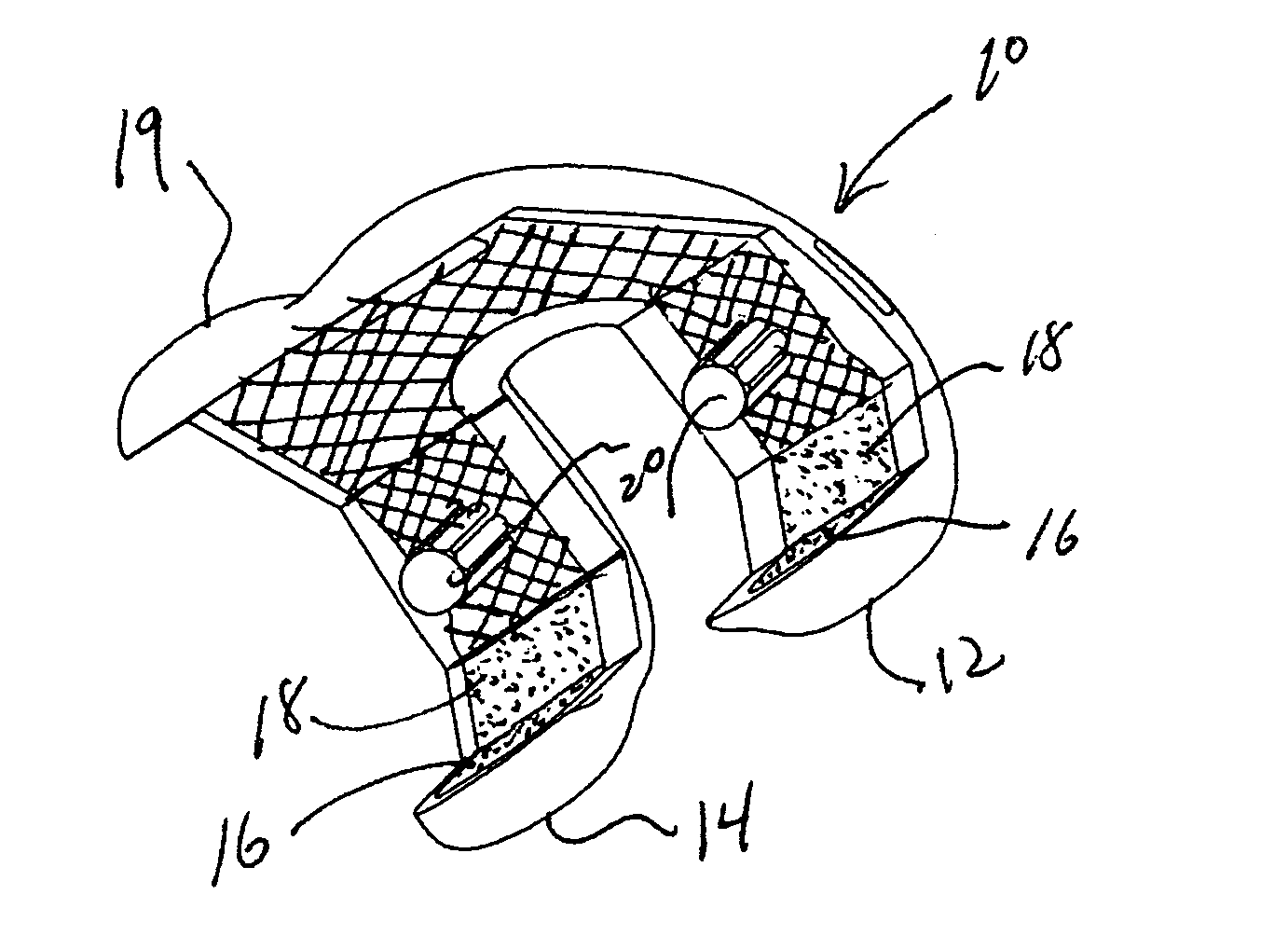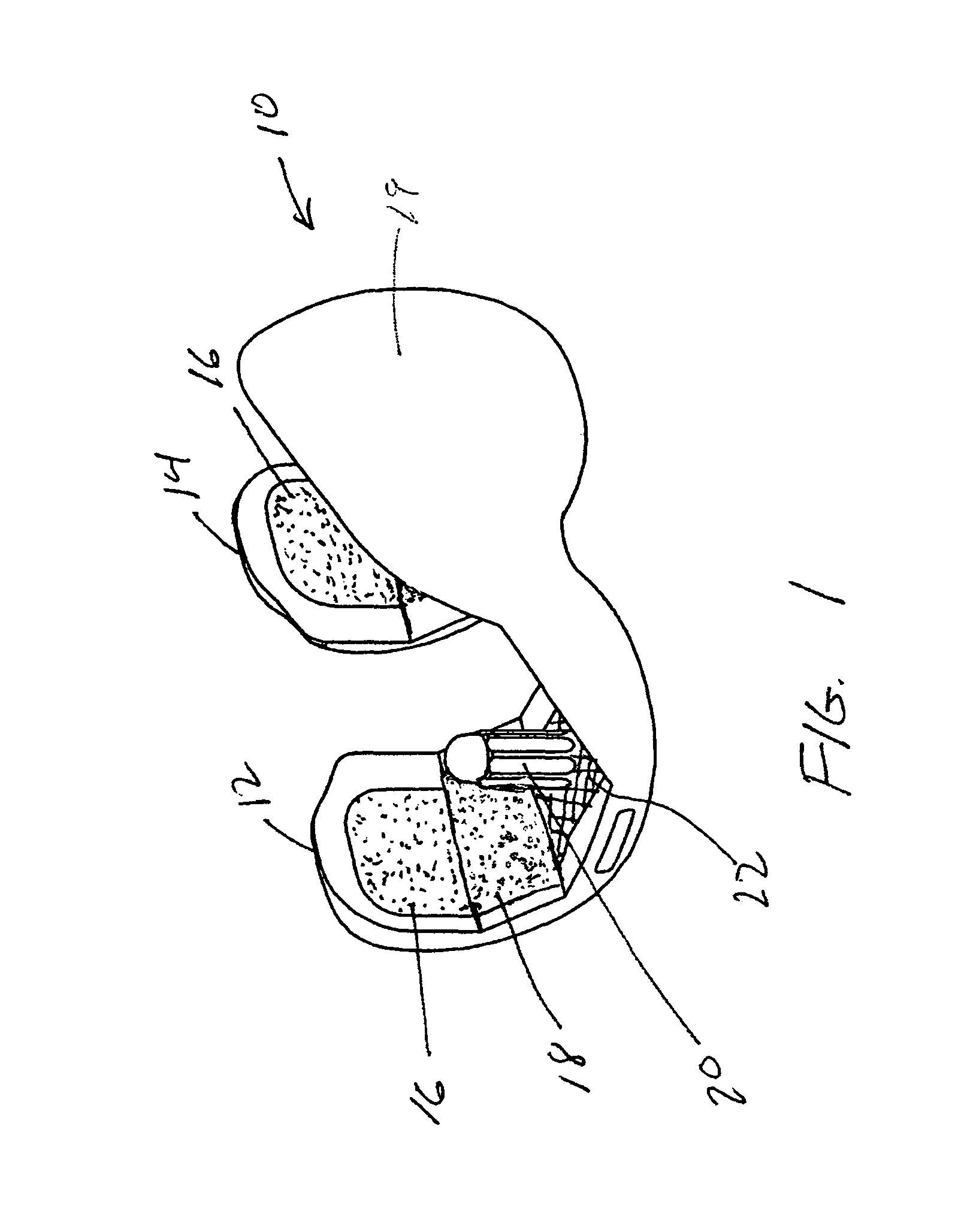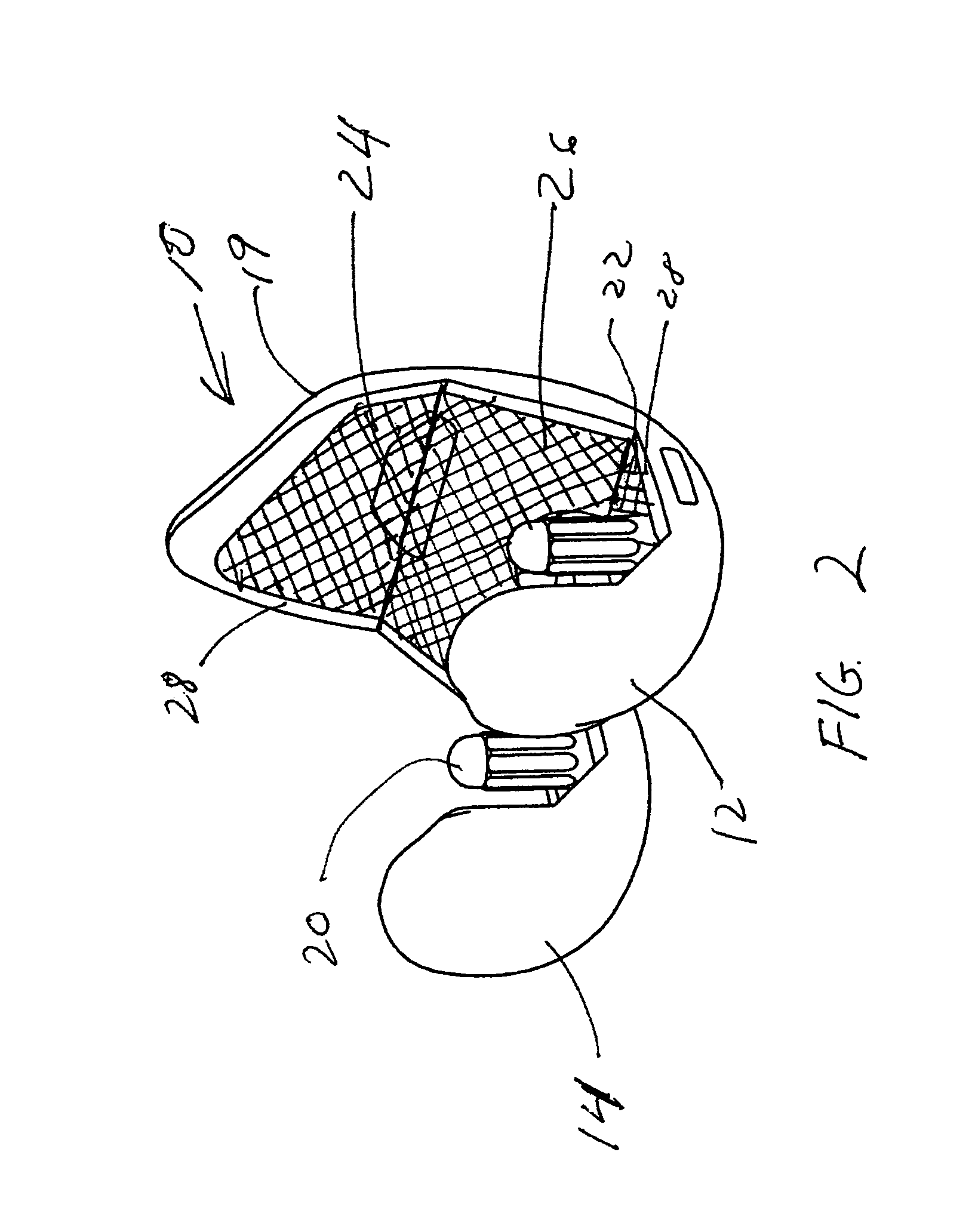Hybrid femoral implant
a femoral implant and hybrid technology, applied in the field of femoral components, can solve the problems of difficult to see the seepage of bone cement, difficulty for surgeons to detect the presence of loose cement particles, etc., and achieve the effects of facilitating tissue in-growth, promoting tissue in-growth, and facilitating both the implantation and the possible removal of future materials
- Summary
- Abstract
- Description
- Claims
- Application Information
AI Technical Summary
Benefits of technology
Problems solved by technology
Method used
Image
Examples
Embodiment Construction
[0015]Referring to FIG. 1, there is shown the femoral component of the present invention generally denoted as 10 with anterior outer surface 19. The view shown is from the anterior medial side looking back toward the posterior condyles 12 and 14, respectively. As can be seen, the posterior condyles 12 and 14 include an inner posterior surface 16 and an inner posterior chamfer surface 18. Also shown is a fixation peg 20 which can be of any typical design. The distal surface 22 is also shown.
[0016]Referring to FIG. 2, there is shown an isometric view looking from the posterior medial side which shows the anterior inner surface 24 and the anterior chamfer surface 26 along with both posterior condyles 12 and 14. In this view, both the medial and lateral pegs 20 are shown. Preferably, surfaces 22, 24 and 26 have a waffle pattern and are preferably recessed slightly so that the waffle pattern does not extend above the edge surfaces 28 surrounding the anterior and anterior chamfer surfaces...
PUM
| Property | Measurement | Unit |
|---|---|---|
| structure | aaaaa | aaaaa |
| porous structure | aaaaa | aaaaa |
| surface textures | aaaaa | aaaaa |
Abstract
Description
Claims
Application Information
 Login to View More
Login to View More - R&D
- Intellectual Property
- Life Sciences
- Materials
- Tech Scout
- Unparalleled Data Quality
- Higher Quality Content
- 60% Fewer Hallucinations
Browse by: Latest US Patents, China's latest patents, Technical Efficacy Thesaurus, Application Domain, Technology Topic, Popular Technical Reports.
© 2025 PatSnap. All rights reserved.Legal|Privacy policy|Modern Slavery Act Transparency Statement|Sitemap|About US| Contact US: help@patsnap.com



